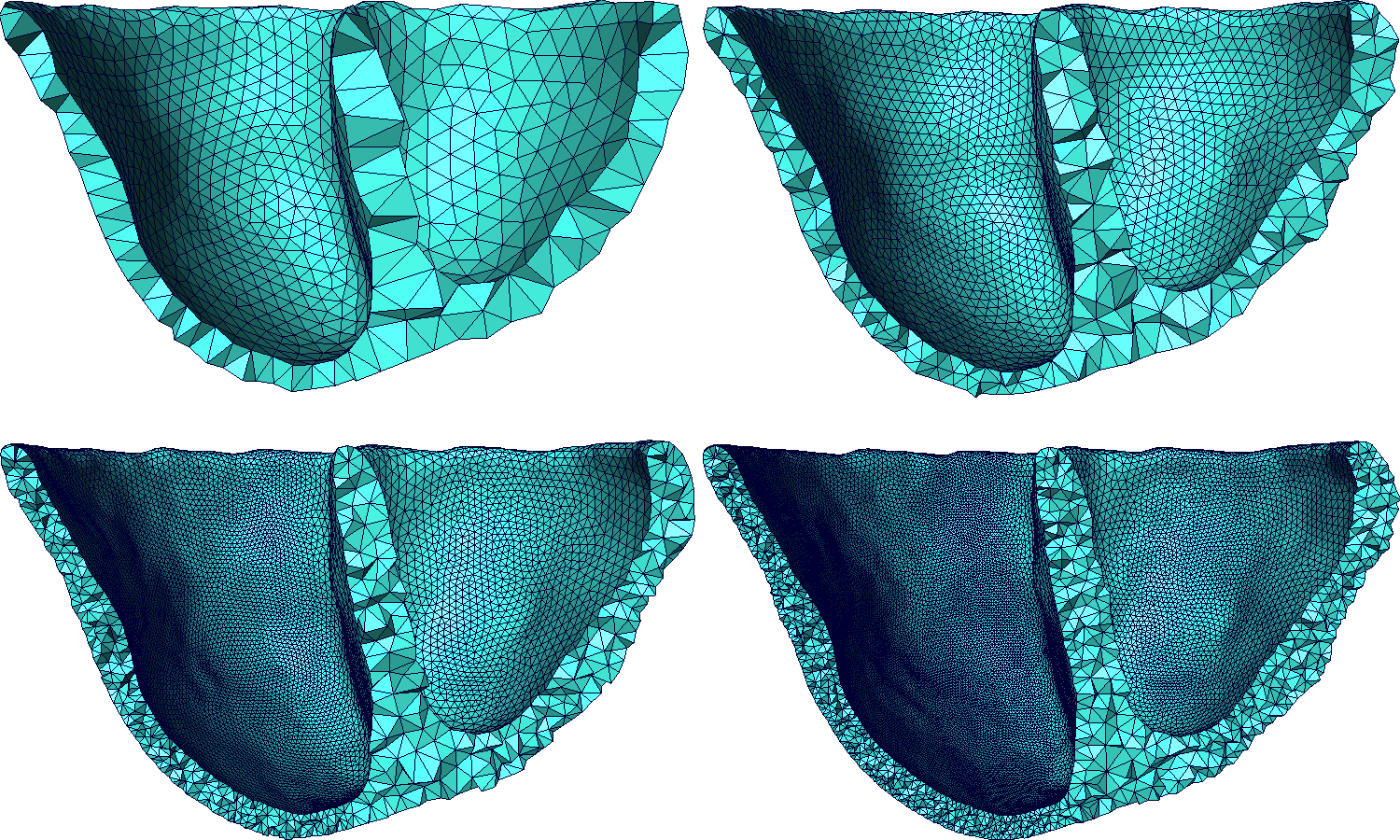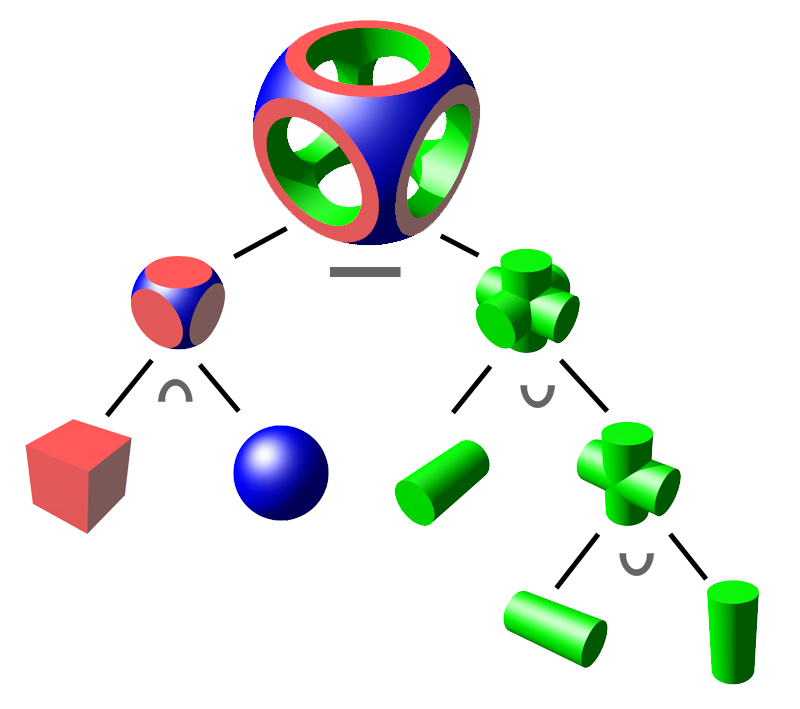Triangle meshes
Vertices have position, normal, colour, texture coordinates, etc.

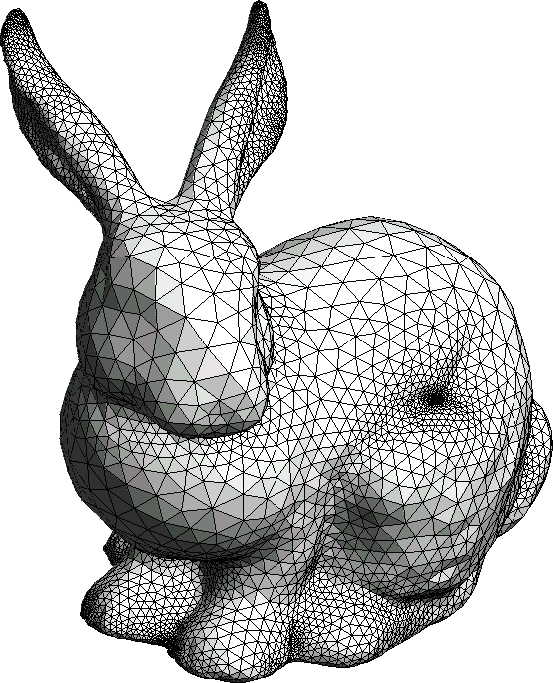
Stanford bunny
Quad meshes
Surface is
$S(u,v) = \sum_{i=1}^k \sum_{j=1}^\ell R_{ij}(u,v) \; P_{ij}$

 |
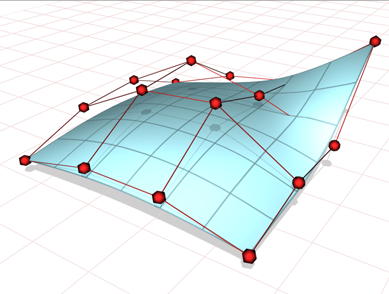 |
| from Blender | from 3dsMax |
Point-based representation
Rendered as a small disk, with lighting

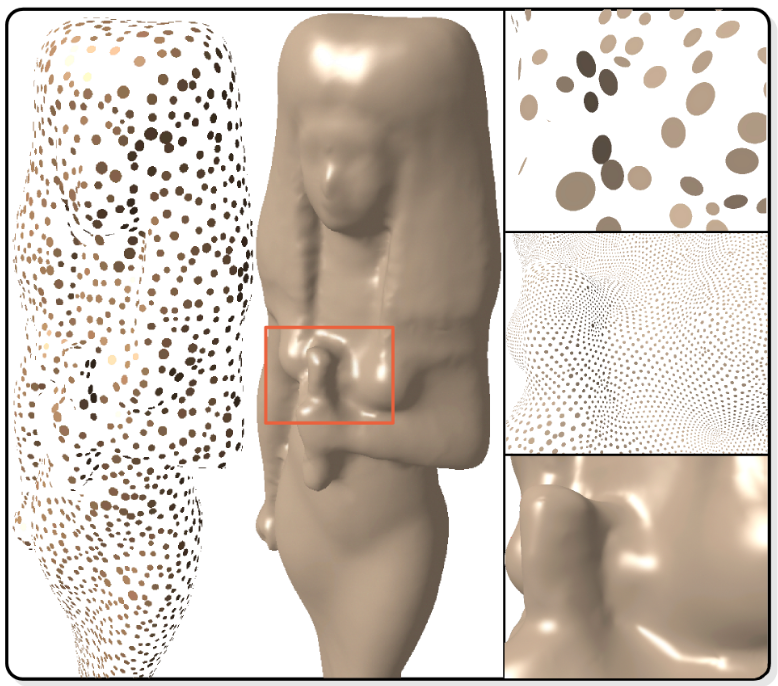
Image from "Interpolatory Refinement for Real-Time
Processing of Point-Based Geometry" by Guennebaud, Barthe, and
Paulin, EuroGraphics 2005
Representation 1: Polygon Soup
List of vertices: $v_0, v_1, v_2, \ldots$
List of faces: $f_0, f_1, f_2, \ldots$
$v_i$ has position $(x,y,z)$, normal $(n_x, n_y, n_z)$, colour $(r,g,b)$, texture coordinates $(s,t)$.
$f_i$ has vertices $v_{i_0}, v_{i_1}, v_{i_2}$ and normal $n$.
Render by (slowly) iterating through all faces.
Representation 2: Winged Edge
Good for topological queries (e.g. what faces are adjace to a vertex, what edges are around a face (in order)).

Edges are unidirectional.
Each edge $e_L$ stores pointers to:
| $v_T$ | tail vertex |
| $e_R$ | twin edge in other direction |
| $f_L$ | face to left of edge |
| $e_{ccw}$ | next outgoing edge counterclockwise at tail vertex |
Each face $f$ stores a pointer to any adjacent edge.
Each vertex $v$ stores a pointer to any adjacent outgoing edge.
Queries
head(e) = e.twinEdge.tailVertex
right(e) = e.twinEdge.leftFace
adjacentFaces(v)
adjacentEdges(v)
adjacentEdges(f)
adjacentVertices(f)
Topological Surgery
E.g. Collapse edge $e$

Representation 3: Triangle Strips
Rendering $n$ triangles using "triangle soup" processes $3n$ vertices.
Using $k$ triangle strips for the same $n$ triangles
processes $n + 2k$ vertices: $2$ to start the strip plus $1$
more for each triangle on the strip.
Covering a triangle mesh with a minimum number of strips is NP-hard.

To render, openGL needs to know whether the next triangle is
to the right or the left exit from the current triangle:

Option 1: Add a bit to indicate left or right.
Option 2: Assume alternating left, then right, then left, etc.: Sequence is $v_0, v_1, v_2, \ldots, v_9$.

Option 3: Add empty triangles: Sequence is $v_0, v_1, v_2, \ldots, v_7$.





